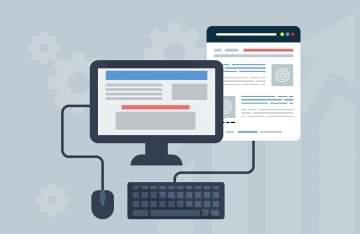It has never been easier to make a website, and the amount of easy to use digital toolboxes out there has never been more numerous. At the same time, we designers more concerned with automating processes and systemizing design that creative thinking and generating ideas falls to the wayside.
There exist prevailing aesthetic preferences that affect not only us, but also clients and other audiences. This makes it challenging to sell anything that looks drastically different from what is currently on the world wide web. Creating something different, therefore, is difficult; we tend to mimic the things we like from other sites, making the creation of unique material harder and riskier. That said, there is plenty of opportunity to stand out without upsetting the general balance of your website.
Perhaps designers should be asking a different question. Why design something that is only fast to create and aesthetically pleasing? The answer to breaking away from simply mimicking what everyone else does is individual expression. The goal should be designing fast, user-friendly websites that are also personable, emotional and expressive.
Whenever words are placed on the page, storytelling should be intrinsic to design.
The key to good design, therefore, is to learn how to impart stories well, while creating meaningful, emotional connections with our readers and visitors. When designers discuss what it means to be different, they often think about unnecessary animation, cumbersome layouts and over the top effects. However, there is a lot of value in daring to have a personality and making low-risk decisions that set websites apart.
There are also certain qualities which should be avoided if you want to avoid frustrating those who visit your website. For instance, click-bait and dark patterns could make your site seem far less trustworthy. And delays from ads that pop up without an ‘x’ to remove them are infuriating. Avoid advertisements that force your visitors to pay attention to an ad for more than ten seconds before they are allowed to access the content on the page. If there are any ads, be sure that the interface responds the way you would expect it to, i.e. ensure that the ad can be removed when the ‘x’ is clicked on.
With the many easy to use toolboxes available to create websites, it has become increasingly hard to establish interfaces that are unique. Rather than focusing solely on aesthetics, designers should first consider what message the company is trying to send to those who visit their sites. The unique product or goals of a company may give designers insight as to how they could alter design in meaningful ways.
What story can be told about your company? How is that story unique from everyone else’s? In addition, designers should avoid factors that impede a user’s ability to view and appreciate the content of the website. Ads can be useful in some ways; however when they get in the way of functionality, they can undermine viewership and readability. Keeping these facts in mind will lead to some of the most unique designs on the market.
A published freelance publisher from print to on the web, F. Aldea enthusiasm is reliable authentic publishing. From the routine knowledge to an incredible remark, F. Aldea usually discovers a method to voice what he sees.




